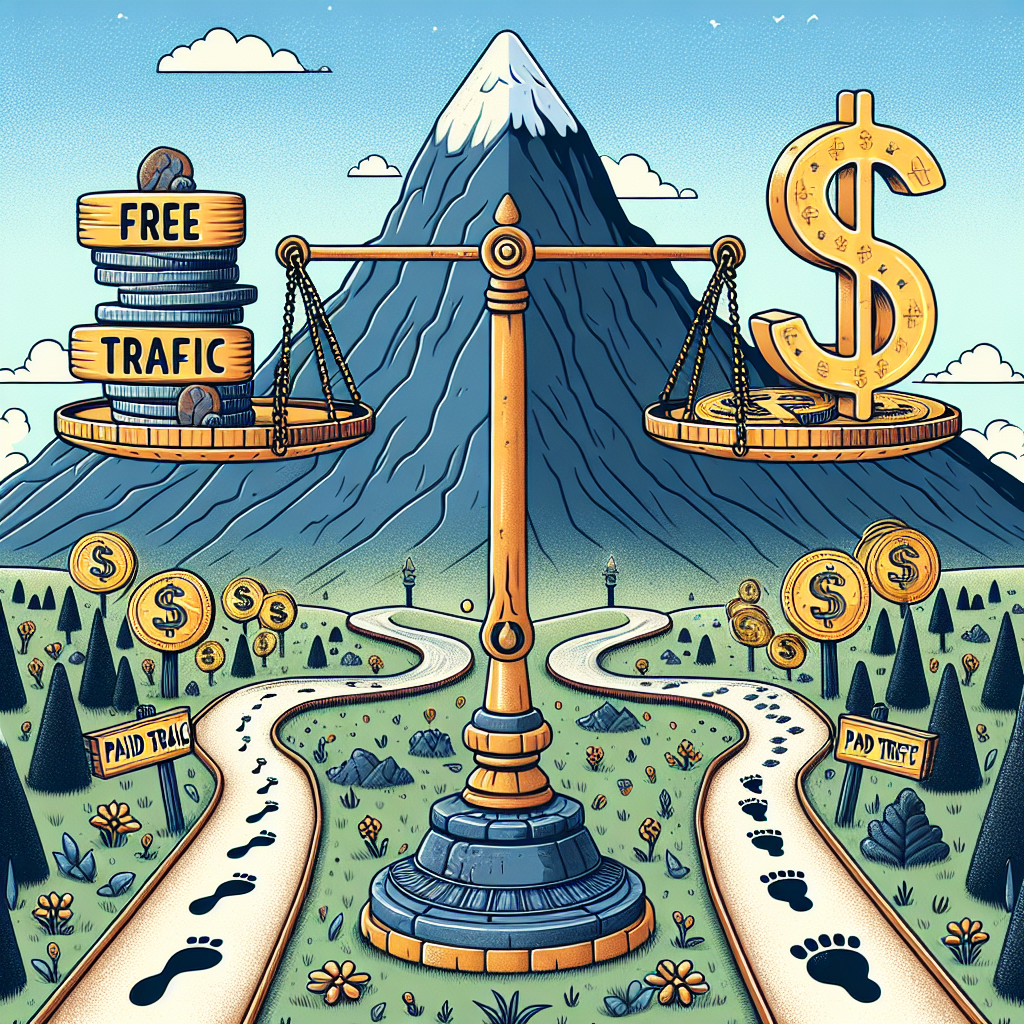Free vs. Paid Traffic: How to Balance Both for Maximum Growth
In the ever-evolving landscape of digital marketing, businesses constantly grapple with a crucial question: should they invest in paid traffic or focus on generating free traffic? Both approaches have their merits and can drive significant growth when used wisely. Finding the right balance between free and paid traffic is essential for maximizing your online presence and achieving sustainable growth. Here’s an in-depth look at how to strike the optimal balance between these two sources of website traffic.
Understanding Free Traffic
Free traffic, often referred to as organic traffic, encompasses visitors who find your website through non-paid methods. These methods include search engine optimization (SEO), social media engagement, content marketing, email marketing, and word-of-mouth referrals.
Advantages of Free Traffic:
-
Cost-Effectiveness: As the name suggests, free traffic doesn’t require direct financial investment. Once set up, organic traffic channels can continually generate visitors without ongoing costs.
-
Long-Term Sustainability: High-quality content, excellent SEO, and strong social media presence can have lasting effects, drawing traffic for months or even years.
- Credibility and Trust: Users tend to trust organic search results and recommendations from peers over paid advertisements.
Challenges of Free Traffic:
-
Time-Consuming: Building substantial organic traffic requires patience and continuous effort.
-
Initial Investment: Although free in the long-term, creating high-quality content, optimizing for SEO, and maintaining social media presence can incur significant initial costs and time.
- Unpredictability: Changes in search engine algorithms and social media trends can impact your organic traffic levels.
Understanding Paid Traffic
Paid traffic involves visitors who come to your website through paid advertising campaigns. These can include pay-per-click (PPC) ads, social media advertisements, sponsored posts, and banner ads.
Advantages of Paid Traffic:
-
Immediate Results: Paid campaigns can drive traffic to your website almost instantly.
-
Scalability: Paid traffic sources can be easily scaled up or down based on your budget and needs.
- Targeted Audience: Advanced targeting options ensure that your ads reach the right audience, often resulting in higher conversion rates.
Challenges of Paid Traffic:
-
Ongoing Cost: Paid campaigns require continual investment, which can become expensive.
-
Short-Term Nature: Once the budget runs out, the traffic stops, making it a less sustainable source without ongoing investment.
- Ad Fatigue: Over time, users may become less responsive to ads, lowering their effectiveness.
Balancing Free and Paid Traffic: A Strategic Approach
To maximize growth, businesses should leverage both free and paid traffic. Here’s how to find the perfect balance:
-
Assess Your Goals and Resources:
- Short-Term Goals: If you need quick traffic boosts for a launch or promotion, invest more in paid traffic.
- Long-Term Goals: For sustained growth and brand building, prioritize free traffic strategies.
-
Budget Allocation:
- Startup Phase: Allocate a larger portion of your budget to paid traffic to drive initial awareness and sales.
- Growth Phase: Once you have a steady stream of visitors, gradually increase your investment in organic traffic methods.
-
Content Strategy:
- High-Quality Content (Free): Create valuable, SEO-optimized content that educates, entertains, and engages your audience.
- Promotional Content (Paid): Develop compelling ad creatives and landing pages tailored to your target audience’s needs and behaviors.
-
Analytics and Optimization:
- Monitor Performance: Use analytics tools to track the performance of both organic and paid traffic sources.
- Adjust Strategies: Continuously optimize your SEO efforts and ad campaigns based on performance data.
- Integration:
- Synergy Between Channels: Use paid campaigns to drive traffic to high-quality content, thereby improving your organic search rankings.
- Retargeting: Employ retargeting ads to re-engage visitors who found your site through organic search but didn’t convert initially.
Conclusion
Balancing free and paid traffic is less about choosing one over the other and more about integrating both to create a robust and comprehensive digital marketing strategy. While free traffic provides long-term sustainability, paid traffic offers the immediacy and scalability essential for rapid growth. By aligning your strategy with your business goals, budget, and resources, and continuously optimizing your efforts, you can harness the full potential of both traffic sources for maximum growth.
